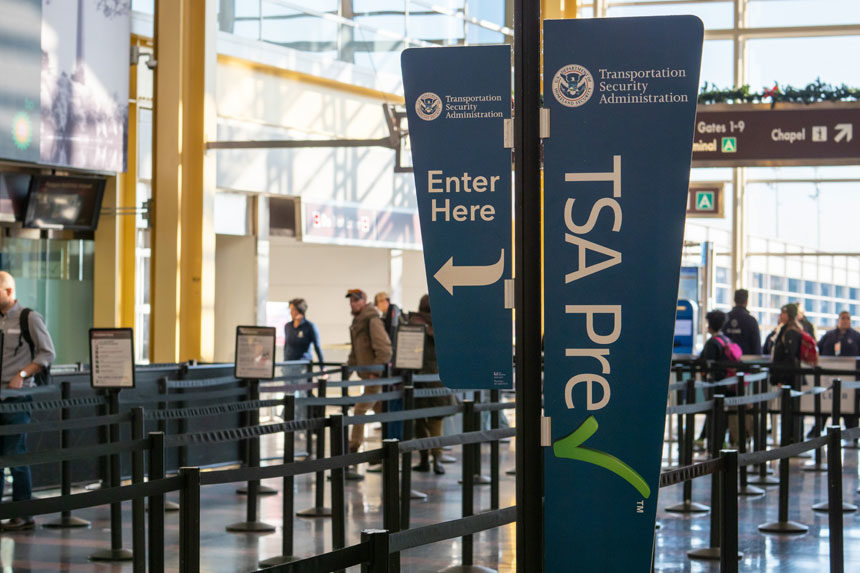Steve Weisman is a lawyer, college professor, author, and one of the country’s leading experts in cybersecurity, identity theft, and scams. See Steve’s other Con Watch articles.
This summer the airports have been extremely crowded, and the lines at security checkpoints are long, causing frustration on the part of many travelers. Fortunately, there is something you can do to reduce the time that you spend in line and make the entire experience easier and less bothersome.
The Transportation Security Administration has a long standing program called TSA PreCheck®, which enables you to go through an expedited screening process at the airport in shorter, special lines, without having to remove your shoes, belt, or jacket or take your laptop or liquids out of your bag. According to the TSA, in June the average wait for a TSA PreCheck passenger in line at security was only five minutes.
Applying for the TSA PreCheck status is easy and starts with an online application that should only take you about five minutes to complete. You then schedule a short ten-minute appointment at one of 380 TSA enrollment centers around the country, where you will be fingerprinted and a background check will be done.
The initial enrollment fee is $85 for a period of five years and then is renewable every five years at a cost of $70. However, many credit cards will cover the cost of the application and renewal as a benefit of card ownership.
As you might expect, anything that is this attractive to the public will be attractive to scammers, and scams related to the PreCheck program have substantially increased in the recent years. Criminals will set up phony websites that appear to be official websites of the TSA. They then lure you into providing personal information they use to make you a victim of identity theft as well as steal the money they charge you online for a phony TSA PreCheck enrollment. Some scammers are charging $140 for their worthless service.
Part of the problem is that sophisticated scammers are adept at manipulating the algorithms used by Google and other search engines so that the phony websites appear near the top of the list in search results. Merely because a website appears high in a search does not mean that it is legitimate. The scammers will also often pay to have their fake website appear as an advertisement at the top of the page.
The only legitimate sites where you can apply for the TSA PreCheck program are https://www.tsa.gov/precheck and https://universalenroll.dhs.gov/.
Sometimes carefully checking the domain name for a counterfeit website will provide an indication that it is a scam. If the domain name has nothing to do with the real name of the company or in this case the TSA, you can be confident that is a scam. I would caution you, however, that merely because the name looks legitimate does not mean that it is. Often scammers will create phony, but very legitimate-appearing domain names. One easy way to determine if a TSA website is a phony is to look for the .gov at the end of the domain name. The phony TSA websites will end with .com.
The Google Safe Browsing Transparency Report is a terrific free service where you can type in the URL and learn if Google’s research indicates it is a scam. You can also use Whois.com, which is a free service that will tell you who owns a particular URL and how long it has been in service. If what appears to be a TSA website has only been around six months and is owned by someone in Nigeria, it certainly is a scam.
It is also important to note that when you first apply for the TSA PreCheck program, you cannot pay online. You can register for the program, but you pay when you have your in-person appointment. Therefore, any site that asks you to pay online for your initial TSA PreCheck status is a scam. When you renew, however, you can complete the entire process — including payment —online.
The renewal process has also been exploited by scammers posing as the TSA via emails encouraging you to click on links to renew your status. This is problematic becuse when you actually need to renew your status, you will get an email from the real TSA. It can be difficult to distinguish the phony TSA email from that of the real TSA, so your best bet is to go directly to the TSA website to find out how and whether you need to renew.
Featured image: Shutterstock
Become a Saturday Evening Post member and enjoy unlimited access. Subscribe now



